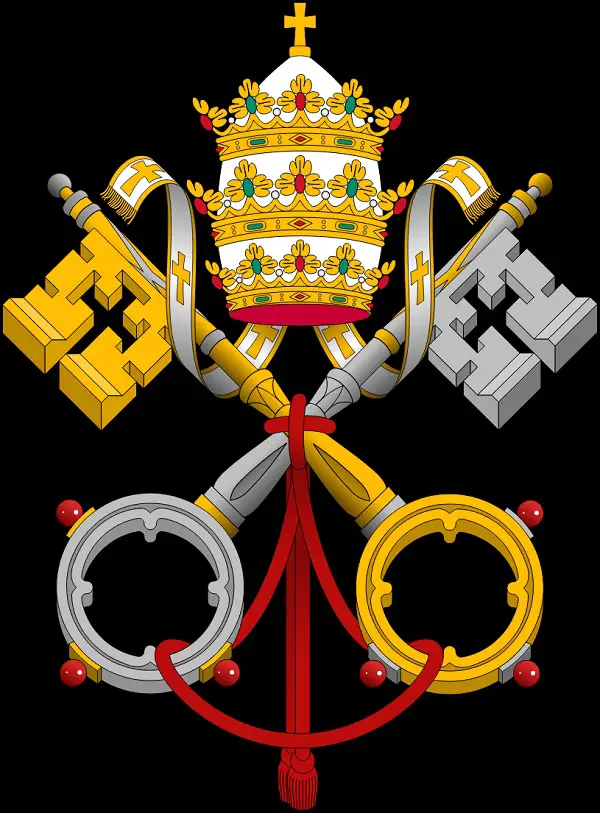Reorganization of the English Hierarchy
Universalis Ecclesiae refers to a decree passed on the 29th of September, 1850 through the employment of which, the Roman Catholic diocesan hierarchy was re-established by Pope Pius IX, in England.
The hierarchy was reorganized in order to promote the greater good of souls and increase the development of the Catholicism.
The same that had been extinguished with the demise of the last Marian bishop during Elizabeth I’s reign. There was the allocation of novel designations/titles to the dioceses, due to the employment of the old ones by the Church of England. This decree sparked quite some anti-Catholic feelings among English Protestants.

Outlawing Catholic Hierarchy
Henry VIII also contributed to the downfall of Catholicism. He was the first monarch to introduce a new state religion to the English. This was in response to a refusal of the annulment of his marriage to his wife. As a response to the refusal, he separated the country of England from the Roman Catholic Church in 1532.
Causing the Pope to lose his authority over the people of England. And creating a chance for Protestantism to enter the country
The Catholic Mass/Catholicism was outlawed in England in the year 1559, under Queen Elizabeth I’s tenure, by enacting the Act of Uniformity. This caused the Catholic observance to become a dangerous affair, due to the heavy penalties being levied on the practitioners and those known as recusants, i.e. people who refused to attend Anglican church services.
The Roman Catholic Relief Act 1829 was one of the initial steps adopted for the Catholics. The act was passed by the Parliament in the year 1829. It was a paramount effect in the Catholic Emancipation regime in the United Kingdom.
It caused a replacement of the Test Act 1672, along with some penal laws present since the passage of the Disenfranchising Act in Ireland. This act had the effect which gave the right to the members of the Catholic Church to have a seat in the parliament at Westminster.
This act also allowed the members of the Catholic Church to have a seat in the parliament at Westminster.
Later, due to various petitions and demands, the reorganization of the Catholic hierarchy was done by the bull passed in 1850.
Organization
Post the re-establishment of the hierarchy of the Church, several changes were made. Certain districts were put under the jurisdiction of certain bishops. These districts became Dioceses i.e. a managerial unit that is supervised by a bishop. The Diocese of Westminster is regarded as the most important/mother church of Welsh and English Catholics.
- The district of London became the metropolitan Diocese of Westminster and the diocese of Southwark
- The Welsh district, including neighboring English territory, became the two dioceses of Menevia and Newport and Shrewsbury
- The Northern district became the diocese of Hexham
- The Eastern district became the diocese of Northampton.
- The Western district became the dioceses of Clifton and Plymouth
- The district of Lancashire became the dioceses of Liverpool and Salford
- The district of Yorkshire became the Diocese of Beverley
- And the Central district became the dioceses of Nottingham and Birmingham
Herein, under the hierarchy thus re-created, the paradigm comprised of one metropolitan archbishop and twelve suffragan bishops.
The Archbishop was not the archbishop of Canterbury, who is the chief leader of the Church of England, along with being the senior bishop. He is the symbolic head of the international Anglican Communion and the diocesan bishop of the Diocese of Canterbury. The position is currently held by Justin Welby who is 105th archbishop
The reformation caused the formation of a new archbishop by the Diocese, who headed the hierarchy.
The Suffragan Bishops for were Liverpool, Southwark, Nottingham Beverley (Divided in 1878 into the two new Dioceses of Leeds and Middlesbrough), Salford, Plymouth, Birmingham Hexham Shrewsbury, Newport and Menevia, Clifton, and Northampton.
Among them, there were vicar generals present too, in order to aid the bishops. A vicar general also known as the archdeacon is the chief deputy of the bishop of a diocese, present in order to provide aid to the bishop in the exercise of administrative authority. He holds the title of the local ordinary.
As a vicar, he possesses the ability to exercises the bishop’s executive power over the diocese, thus, providing him the uppermost position. He is the highest official in the diocese.
There were several changes made to the aforementioned districts as well.
In 1882, the Diocese of Portsmouth was formed, by the disintegration of the Diocese of Southwark into the Dioceses of Portsmouth and Southwark. Thus, the province of Westminster was numerically the largest in the world, possessing 15 suffragan bishops.
In 1895, there was a separation of (excluding Glamorganshire) into two Dioceses of Shrewsbury, and Newport and Menevia, and formed into the Vicariate of Wales.
There remained suffragan Sees with Westminster, those were of Nottingham, Portsmouth, Northampton, and Southwark. Whereas, to Birmingham, Plymouth, Menevia, Clifton, Shrewsbury, and Newport were assigned. And Liverpool was allocated Middlesbrough, Hexham and Newcastle, Salford, and Leeds.
There was a prevailing view for years that such a division would give rise to disunion and anarchy, especially in the case of its meaning, as in the era before reformation, a divide between the south and the north.
However, such a situation was evaded by ignoring the earlier cases of Canterbury and York, and by altering the arrangement, arranging for three rather than two provinces.
As per the new constitution, a right was granted to the Archbishop of Westminster, the right being becoming the permanent chairman of the Bishop meetings of the entire Wales and England, he was, thus also allocated the right to summon the meetings along with possessing the right to preside over them. He, thus us superior in rank to the other two archbishops.
